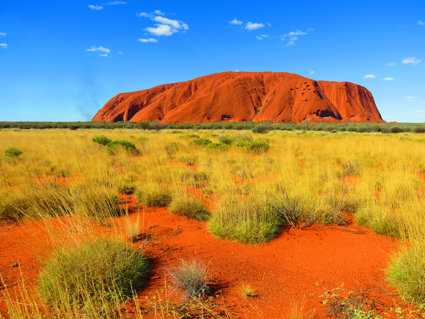
The Australian population
This lesson teaches pupils more about the human geography of Australia
In this lesson pupils learn more about the human geography of Australia. They consider who makes up the population in Australia and learn about the Aboriginal culture. Pupils are introduced to the important geographical terms ‘migration’ and ‘ageing population’, and discover that much of Australia’s population have migrated to the country from other locations around the world. Where the majority of the population lives is also investigated, and pupils learn where main cities of Australia are located (in coastal areas).
Key questions
Who were the first people to live in Australia?
What is migration?
Where have people living in Australia migrated from?
Where in the country do most people live and why?
What is an ‘ageing population’?
Key ideas
The first humans settled in Australia around 40,000 years ago.
European explorers first sighted and landed in Australia in the 1600’s.
Over the years Australia became home to people from many European countries and more recently from other countries around the world such as China, South Africa, and India.
The population is most dense in coastal areas. The cities with the highest populations are all in coastal areas.
Australia is a part of the Commonwealth and historically has been very influenced by the culture of the UK. The Queen of England is also the Queen of Australia.
Today there are around 23 million people living in Australia.
Additional resources
-
Globe
-
Google Earth/Google Maps on interactive whiteboard
-
Atlases
Weblinks
Go to YouTube website to watch the Aboriginal Crane Dance.
Starter
Locate Australia in an atlas and globe. Revisit the content of lesson one: the size of Australia and compare with the size of other countries, such as the UK.
Explain to the pupils they will learn more about the population (people who live) in Australia.
Australia has a total population of around 23 million people. Approximately 600 000 of these people are Aboriginal people and Torres Strait Islanders. These are the people who first settled in Australia before Europeans arrived in the 1600’s.The original population can also be called ‘indigenous’ people.
There are people living in Australia who have migrated to Australia from other countries. Around one quarter of Australia’s population were not born there.
Model where the first settlers (indigenous people) travelled from 60,000 years ago using the map on the Who are Australians and where do they live? PowerPoint presentation (see downloadable resources).
Main Activity
The Aboriginal or indigenous Australians have lived in the country for the longest length of time, but they only make up a small amount of the current population. Alongside this indigenous population many other people have immigrated into the country since the first European settlers arrived in the 1600’s.
The Indigenous People
-
The indigenous people of a country are the first settlers.
-
In Australia these are also called the Aboriginal peoples and Torres Strait Islanders. They have lived in the country for many thousands of years.
-
Discuss and show images of the Aboriginal culture: art, music, and dance as shown on the Who are Australians and where do they live? PowerPoint presentation slide five (see downloadable resources). Play the YouTube video of the Crane Dance.
Where do most people live?
-
The population of a particular part of a country can be described as ‘sparse’ or ‘dense’. A sparse population means that the number of people living on a particular area of land is relatively low. A dense population means that the number of people living on a particular area of land is relatively high.
-
The coastal cities of Australia are the areas of the country that are most densely populated.
-
Indigenous Australians tend to live throughout the country, some in more isolated places inland and others live in cities.
-
The non-indigenous Australians tend to live in coastal cities.
-
Cities are most accessible, have the best services and jobs available which attract people and particularly people migrating from elsewhere in the world.
-
Inland areas are relatively isolated and do not have such good access to transport, schools and hospitals, they also suffer from drought and water shortages.
-
Cities developed in coastal areas as these places are most accessible from other countries and for trade.
-
A more pleasant climate and access to jobs, services and beaches also encourage some people to choose to live in coastal cities.
Pupils to complete the Where do Australians Live? Map activity (see downloadable resources).
Label the location of five state capitals: Darwin, Melbourne, Sydney, Perth and Canberra.
Pupils should use slide 16 of the Who are Australians and where do they live? PowerPoint presentation to shade the areas with the highest or most dense population.
Pupils should include a key to show the capital city and the colour of the most populated areas.
Extension
If pupils finish this activity, they can go on to compare the maps of where the indigenous and non-indigenous Australians live and write a few sentences about the differences (the indigenous population are more spread across the country, whereas the non-indigenous population is concentrated in coastal cities).
Plenary
Pose the following questions to assess pupils’ learning:
-
Why do most of the non-indigenous population choose to live in coastal areas?
-
Where would they choose to live in Australia and why- by the coast or inland?
-
Can they remember a traditional Australian instrument and a name of Australian dance?
-
Why is Australia’s population described as ‘ageing’?
-
Pupils can sing the Australian National Anthem (see downloadable resources).
Idea for a linked art lesson: pupils create paintings in the style of the traditional aboriginal art (dotting technique and bright colours).
File nameFiles
File type
Size
Download
